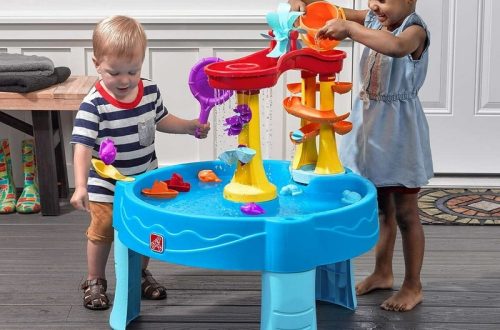Part 1: Introduction to Coding Toys for Kids
In recent years, a new generation of educational toys has emerged to introduce children to the world of programming and coding. These toys are designed to make learning about STEM subjects (science, technology, engineering, and mathematics) fun and engaging. As the demand for coding and programming skills grows, these toys are becoming increasingly popular for parents and educators who recognize the value of introducing children to essential technological skills from an early age.
1. Introduction to Coding Concepts:
Coding toys are designed to introduce children to the basic concepts of coding and programming. They use colorful blocks, buttons, and other components to teach children how to create simple sequences of instructions. This early exposure to coding concepts helps children develop problem-solving, logical reasoning, and sequential thinking skills.
2. Bridging the Gap Between Education and Play:
These toys offer a seamless integration of play and learning. By incorporating coding and programming principles into interactive play, children can acquire essential skills in a natural, enjoyable manner. This approach not only facilitates learning but also fosters a positive attitude towards technology and learning in general.
Part 2: Benefits of Coding Toys for Kids
The advantages of using coding toys extend beyond the acquisition of coding skills. These toys offer a range of cognitive, social, and emotional benefits for children.

3. Development of Critical Thinking
Coding toys play a crucial role in fostering critical thinking skills in children. These toys often involve creating sequences of commands, debugging errors, and finding creative solutions to reach a desired outcome. By engaging in these activities, children learn to think systematically and break down complex problems into smaller, manageable steps.
As children experiment with different coding combinations, they develop the ability to analyze information, identify patterns, and make informed decisions. This critical thinking process is essential for problem-solving, decision-making, and academic success. Additionally, coding toys can help children develop perseverance and resilience. When faced with challenges or errors, children learn to persevere and try different approaches until they find a solution. This can foster a growth mindset and a willingness to take on new challenges.
4. Fostering Creativity and Innovation
Coding toys provide a stimulating environment for children to explore their creativity and innovation. These toys often offer open-ended play experiences, allowing children to experiment with different combinations of instructions and create unique outcomes. This freedom to explore and experiment encourages children to think outside the box and develop novel solutions.
By engaging in creative coding activities, children can express their individuality and develop a sense of ownership over their projects. This can boost their confidence and self-esteem, while also fostering a love of learning and discovery. Furthermore, coding toys can help children develop a mindset of innovation. As they experiment with different approaches and learn from their mistakes, children become more comfortable with taking risks and embracing new ideas. This can set them up for success in a rapidly changing world.
Part 3: Building Key Skills Through Coding Toys
Apart from the specific coding skills, these toys help children develop a range of fundamental cognitive and social skills that are valuable in various aspects of their lives.
5. Problem-Solving and Analytical Skills
Coding toys offer a rich environment for children to develop essential problem-solving and analytical skills. These toys often involve creating, testing, and refining instructions to achieve a desired outcome. By engaging in these activities, children learn to analyze situations, break down complex problems into smaller parts, and figure out the most effective ways to achieve a specific goal.
As children experiment with different coding combinations and troubleshoot errors, they develop the ability to think critically, identify patterns, and make informed decisions. This problem-solving process is invaluable for academic success, career advancement, and everyday life. Moreover, coding toys can help children develop a growth mindset. When faced with challenges or setbacks, children learn to persevere and try different approaches until they find a solution. This can foster a positive attitude towards learning and a willingness to take on new challenges.

6. Collaboration and Communication Skills
Many coding toys are designed to be used collaboratively, providing opportunities for children to work together, communicate effectively, and share ideas. These experiences lay the foundations for teamwork, leadership, and effective communication – essential skills in today’s interconnected world.
By working with their peers on coding projects, children learn to share their ideas, listen to others, and collaborate towards a common goal. This can help them develop empathy, respect, and the ability to work effectively in diverse teams. Additionally, coding toys can help children improve their communication skills. As they explain their ideas to others and discuss their coding solutions, children learn to express themselves clearly and concisely. This can enhance their oral and written communication abilities.
Part 4: Coding as a Fundamental 21st-Century Skill
In the increasingly technology-driven world, coding has emerged as a fundamental skill, and early exposure to coding through toys provides an invaluable head start for children.
7. Digital Literacy and Preparedness for the Future:
In today’s digital age, technological proficiency is becoming increasingly essential for success in various careers and fields of study. By learning to code at an early age, children can gain a significant advantage in a future where technological skills are highly valued.
Coding education equips children with digital literacy, enabling them to understand how technology works and interact with it effectively. This knowledge is not only valuable for computer science or engineering careers but also for fields such as business, healthcare, and even the arts. As technology continues to permeate every aspect of our lives, individuals with a strong understanding of coding will be better equipped to navigate the digital landscape and leverage technology to their advantage.
8. Promoting STEM Interest and Career Potential:
Early exposure to coding can spark an interest in technology, engineering, and computer science that could lead to pursuing careers in these fields. It encourages children to see the potential of these fields, fostering a curiosity and passion for STEM-related subjects.
Part 5: Selecting the Right Coding Toy for Your Child
When choosing a coding toy for a child, it’s essential to consider various factors, such as the child’s age, interests, and the educational value of the toy.
9. Age-Appropriate Features and Complexity:
Select a coding toy that is suitable for the child’s age and developmental stage. Younger children may benefit from simpler toys that focus on basic concepts, while older children may be ready for more complex coding challenges.
10. Interactive and Engaging Design:
Look for toys that offer an interactive and engaging experience. Toys with colorful components, varied challenges, and a playful design can captivate a child’s interest and sustain their engagement over time.

Part 6: Conclusion: Ensuring a Bright Future for Children Through Coding Toys
The benefits of coding toys go beyond acquiring technical skills – they contribute to the holistic development of children, preparing them for a future where understanding technology is essential.
11. Encouraging Lifelong Learning and Curiosity:
By introducing children to coding through play, parents and educators foster a lifelong love for learning and exploration. Children become comfortable with technology and develop a confident, inquisitive mindset.
12. Investing in Your Child’s Future:
In today’s digital age, understanding the basics of coding and programming is critical. By providing children with access to coding toys, parents and educators are investing in their future success, equipping them with essential skills for the 21st century.
In conclusion, coding toys are more than just playthings – they serve as vehicles for learning, skill development, and preparation for the technology-driven future. By introducing children to coding through these engaging and educational toys, we contribute to their holistic growth, setting them on a path towards a future of innovation, success, and limitless possibilities.



